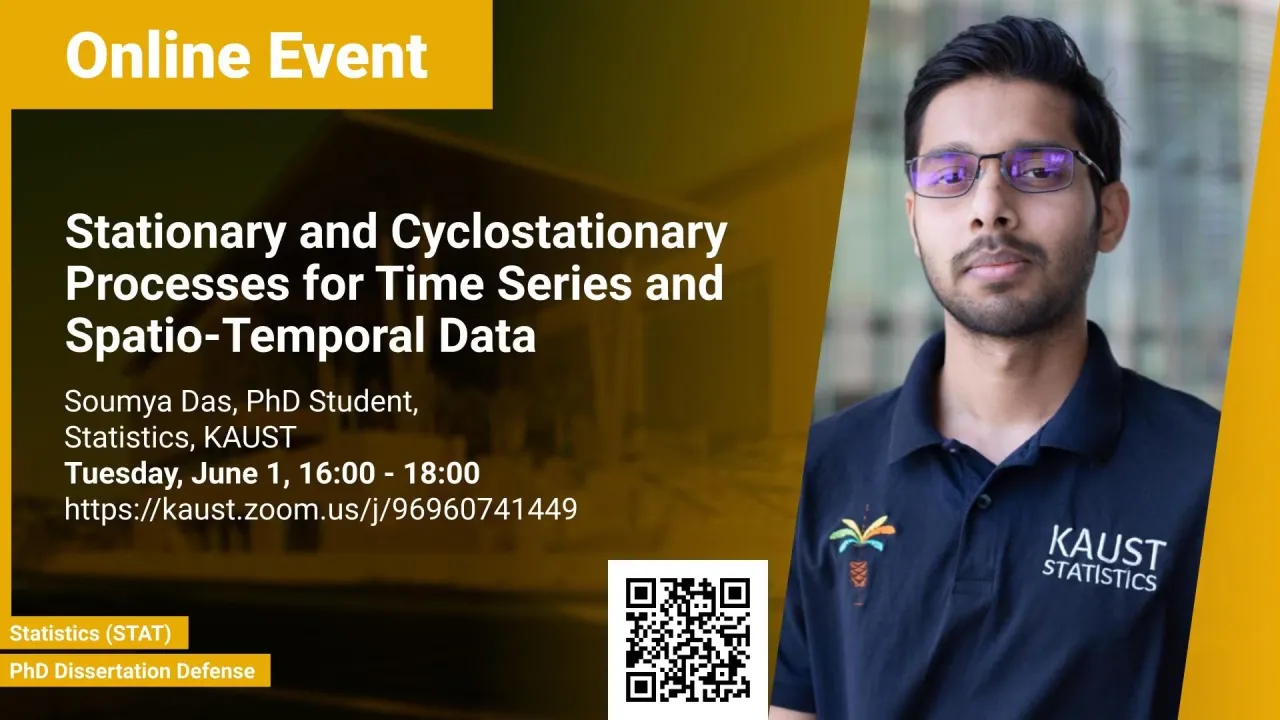
Stationary and Cyclostationary Processes for Time Series and Spatio-Temporal Data
Due essentially to the difficulties associated with obtaining explicit forms of stationary marginal distributions of non-linear stationary processes, appropriate characterizations of such processes are worked upon little. After discussing an elaborate motivation behind this thesis and presenting preliminaries in Chapter 1, we characterize, in Chapter 2, the stationary marginal distributions of certain non-linear multivariate stationary processes. To do so, we show that the stationary marginal distributions of these processes belong to specific skew-distribution families, and for a given skew-distribution from the corresponding family, a process, with stationary marginal distribution identical to that given skew-distribution, can be found.
Overview
Abstract
Due essentially to the difficulties associated with obtaining explicit forms of stationary marginal distributions of non-linear stationary processes, appropriate characterizations of such processes are worked upon little. After discussing an elaborate motivation behind this thesis and presenting preliminaries in Chapter 1, we characterize, in Chapter 2, the stationary marginal distributions of certain non-linear multivariate stationary processes. To do so, we show that the stationary marginal distributions of these processes belong to specific skew-distribution families, and for a given skew-distribution from the corresponding family, a process, with stationary marginal distribution identical to that given skew-distribution, can be found.
While conventional time series analysis greatly depends on the assumption of stationarity, measurements taken from many physical systems, which consist of both periodicity and randomness, often exhibit cyclostationarity (i.e., a periodic structure in their first- and second-order moments). Identifying the hourly global horizontal irradiances (GHIs), collected at a solar monitoring station of Saudi Arabia, as a cyclostationary process and considering the significant impact of that on the energy production in Saudi Arabia, Chapter 3 provides a temporal model of GHIs. Chapter 4 extends the analysis to a spatiotemporal cyclostationary modeling of 45 different solar monitoring stations of the Kingdom. Both the proposed models are shown to produce better forecasts, more realistic simulations, and reliable photovoltaic power estimations in comparison to a classical model that fails to recognize the GHI data as cyclostationary.
Chapter 5 extends the notion of cyclostationarity to a novel and flexible class of processes, coined evolving period and amplitude cyclostationary (EPACS) processes, that allows periods and amplitudes of the mean and covariance functions to evolve and, therefore, accommodates a much larger class of processes than the cyclostationary processes. Thereafter, we investigate its properties, provide methodologies for statistical inference, and illustrate the presented methods using a simulation study and a real data example, from the heavens, of the magnitudes of the light emitted from the variable star R Hydrae.
Finally, Chapter 6 summarizes the findings of the thesis and discusses its significance and possible future extensions.
Brief Biography
Soumya Das is a Ph.D. candidate supervised by Prof. Marc Genton in the Statistics Program at King Abdullah University of Science and Technology. He received his B.Sc. degree in Statistics from the Ramakrishna Mission Residential College, Narendrapur, West Bengal, India, in 2015, and the M.Sc. degree in Statistics from the Indian Institute of Technology (IIT), Kanpur, India, in 2017. His research interests include cyclostationary processes, statistical signal processing, semiparametric and nonparametric methods, and spatial, temporal, and spatio-temporal data analyses.